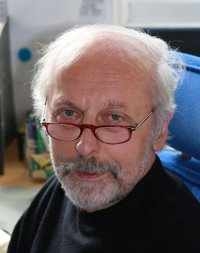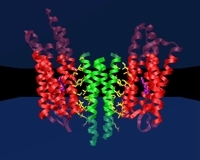
Research Centre Jülich, Institute of Complex Systems (ICS), ICS-5: Molecular Biophysics, 52425 Jülich, Germany
e-mail: g.bueldt@fz-juelich.de

 |
Georg Büldt
Research Centre Jülich, Institute of Complex Systems (ICS), ICS-5: Molecular Biophysics, 52425 Jülich, Germany e-mail: g.bueldt@fz-juelich.de |
 |
A survey is given about the important role of bacterial retinal proteins on the development of structural methods in electron microscopy and X-ray and neutron scattering to elucidate membrane protein structure. In this sense the prominent retinal protein bacteriorhodopsin (bR) is the "myoglobin of membrane proteins".
Structural research on two-dimensional bR lattices, the purple membranes, induced several important advances in high resolution electron microscopy (R. Henderson), intermediate state analysis by electron, X-ray and neutron diffraction and functionally important equilibrium fluctuations by quasielastic neutron scattering (N.A. Dencher, J. Fitter, J. Zaccai, G. Büldt).
With respect to 3D crystals bR was the first crystallized membrane protein although diffracting poorly, but delivered important experiences to the crystallization of the reaction centre and its first high resolution structure of a membrane protein (H. Michel, Deisenhofer, R. Huber).
Solubilised bR was the first membrane protein crystallized by the lipidic cubic phase method (E. Landau & J. Rosenbusch). This new method turned out to be very fruitful in the crystallization of several seven α-helical receptors and complexes (V.G. Cherezov, V. Gordeliy, H. Luecke, J.K. Lanyi, M. Engelhard, G. Büldt).
It should be emphasized that high resolution crystal structures establish the basis of experimental strategies for other methods and the interpretation of their results. Black-Lipid-Membrane and Pack-Clamp experiments (G. Nagel, E. Bamberg) as well as the different techniques of Fourier Transform Infrared Spectroscopy and their results are prominent examples and were successfully used for the understanding of the mechanisms of bR and other retinal proteins (contributions from German groups: F. Siebert, K. Gerwert, J. Heberle, W. Mäntele, R. Vogel, F.J. Bartl).